
EARTH�S TREASURES
THE ENDANGERED SPECIES
THE ENDANGERED SPECIES

Approximately 30,000 species
of animals and plants
are close to extinction
throughout our world.
Since the Pilgrims landed
on the shores of America in 1620
more than 500 species in America
have become extinct.
America and many other nations
have laws protecting
the Earth�s endangered species.
Hundreds of species in America
have been saved since 1973
when Congress enacted
The Endangered Species Act,
which now protects nearly
one thousand animals and plants.
More than one half
of all species listed in 1973
as endangered
are now in good shape.
The Endangered Species Act
identifies animals and plants
that are in danger of extinction;
protects them and their habitats
so they have all they need to survive;
prevents people from selling items
made from endangered species;
and protects endangered species
from people who intend
to hurt them or to kill them.
Endangered species
are those animals and plants
in danger of extinction
throughout the area in which
they are usually found.
Endangered species
act as natural alarms
because if they are in trouble
many other species
including humans
may be in trouble, too.
The United States Fish and Wildlife Service
and The National Marine Fisheries Service
work to afford endangered species
in the United States the safety
they need to survive.
The passenger pigeon is now extinct.
Seventy-five per cent
of the gray bat population
has been wiped out
in the last twenty years.
The grizzly bear population in 1800
was approximately 50,000
in the United States, and in 1999
there are fewer than 1000.
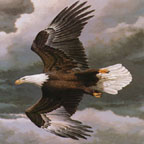
The bald eagle
the symbol of America
was in danger of extinction
only thirty years ago.
Though efforts to protect it
have certainly succeeded
it is still threatened,
but not endangered so far.
Threatened species
are animals and plants
that are likely to become
endangered in the near future
unless they are protected.
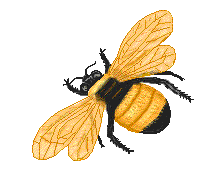
Why is it so important
to protect wildlife and plants?
All animals and plants
are an integral thread
in the tapestry of life.
If any thread of that tapestry
is destroyed and eliminated,
it will disturb the natural order
for everything else.
We may not see the damage
right away, but sooner or later,
the trouble in nature will occur.
All animals and plants
are important to each other
and every animal
and every plant
has its own special place
in life on our planet.
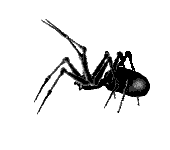
Since every animal and plant
is uniquely different,
should we lose one species
we lose a precious model
that can never be replaced.
If a species is destroyed,
we lose the chance to learn
how valuable it may be
to science and medicine.
Approximately
one half of all medicine
come from, or are copied
from animals and plants;
aspirin from the willow;
cancer drugs from the yew;
leukemia drugs from
the rosy periwinkle,
to name but a few.
Fewer than twenty species of plants
produce ninety percent
of all the food in the world.
It is important to our survival
that we find other food sources
that are bug and disease resistant.
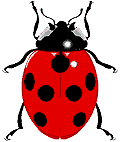
Animals and plants
provide the beauty and variety
that make our world
an especially wonderful home.
It is important to respect
all forms of life,
and many people believe
that all living things
have a right to live.
The main reason animals and plants
become endangered
is because they lose their habitats.
Other reasons species
become endangered include
pollution, predators, diseases,
loss of food sources, illegal or
unrestricted killing
and the collecting of wildlife.

Different needs create a situation
where the interests of wild animals
conflict with the interests
of the human animal,
but the human animal
has the faculty to protect
the interests of both.
The red-cockaded woodpecker
is the only bird to make holes
in living pine trees
for its nesting.
Many other animals
that need these holes include
songbirds, owls, bees,
snakes and flying squirrels.
So much of its natural habitat
has been cut down for timber
or to clear farming area
placing the woodpecker
on the endangered list.
Paper companies joined
with environmental groups in 1993
to increase the woodpecker�s habitat
and the bird�s population
is increasing steadily.
Alligators have been on Earth
for 200 million years,
yet by 1967, they were nearly
extinct in the United States,
because people destroyed
their natural habitat
by draining the swamps.
People slaughtered alligators
to make shoes and purses,
for food, for sport
and out of fear.
What makes a species so important
is often something we never
think of until it�s too late.
If we destroy a species,
we may very well leave a hole
that is much too big to fix.
A lot of other creatures would die
without the American alligator,
a fact we simply did not understand.
One of the most important things
alligators do is to create
hollows in the swamp.
Alligators use their entire bodies
to make small craters in the ground.
Water stays in these gator holes,
and during dry spells
they may provide the only water
in a particular area.

Animals that depend on gator holes
include crayfish, turtles,
frogs, fish and insects.
Other animals higher up
on the natural food chain
eat those species to survive
including otters, raccoons,
great blue herons and water snakes.
Fortunately people acted in 1967
and placed the alligator
on the endangered species list
and twenty years later
the alligator population
was completely replenished.
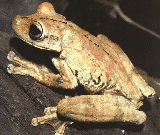
Source material for this dialogue
was garnered and freely paraphrased
for clarity and enhancement from ~
Susan Jewell, Biologist
Division of Endangered Species
United States Fish and Wildlife Service


